Study of Power Flow in an IPT System Based on Poynting Vector Analysis
Abstract
:1. Introduction
2. Electromagnetic Fields at Arbitrary Point of Two-Coil IPT System
3. Poynting Vector in an IPT System
4. Power Distribution Analysis
4.1. Analytical Analysis
4.2. Numercial Analysis
5. Power Flow Analysis
5.1. Power Transfer across Mid-Plane from Primary Coil to Secodnary Coil
5.2. Example Power Flow Analysis
6. Conclusions
Acknowledgments
Author Contributions
Conflicts of Interest
References
- Green, A.W.; Boys, J.T. 10 kHz inductively coupled power transfer-concept and control. In Proceedings of the Fifth International Conference on Power Electronics and Variable-Speed Drives, London, UK, 26–28 October 1994; pp. 694–699. [Google Scholar]
- Hu, A.P. Selected Resonant Converters for IPT Power Supplies. Ph.D. Thesis, University of Auckland, Auckland, New Zealand, 2001. [Google Scholar]
- Wang, C.-S. Design Considerations for Inductively Coupled Power Transfer Systems; Electrical and Electronic Engineering—University of Auckland: Auckland, New Zealand, 2004. [Google Scholar]
- Madawala, U.K.; Thrimawithana, D.J. A bidirectional inductive power interface for electric vehicles in V2G systems. IEEE Trans. Ind. Electron. 2011, 58, 4789–4796. [Google Scholar] [CrossRef]
- Kurs, A.; Karalis, A.; Moffatt, R.; Joannopoulos, J.D.; Fisher, P.; Soljacic, M. Wireless power transfer via strongly coupled magnetic resonances. Science 2007, 317, 83–86. [Google Scholar] [CrossRef] [PubMed]
- Karalis, A.; Joannopoulos, J.D.; Soljačić, M. Efficient wireless non-radiative mid-range energy transfer. Ann. Phys. 2008, 323, 34–48. [Google Scholar] [CrossRef]
- Cheon, S.; Kim, Y.H.; Kang, S.Y.; Lee, M.L.; Lee, J.M.; Zyung, T. Circuit-Model-Based Analysis of a Wireless Energy-Transfer System via Coupled Magnetic Resonances. IEEE Trans. Ind. Electron. 2011, 58, 2906–2914. [Google Scholar] [CrossRef]
- Kiani, M.; Ghovanloo, M. The Circuit Theory behind Coupled-Mode Magnetic Resonance-Based Wireless Power Transmission. IEEE Trans. Circuits Syst. I Regul. Pap. 2012, 59, 2065–2074. [Google Scholar] [CrossRef] [PubMed]
- Fan, J.; Yu, F.; Zhang, G.; Tian, Z.; Liu, J. Two Fundamental Physics Issues Need Paying Great Attention in Wireless Power Transmission. Trans. China Electrotech. Soc. 2013, 28, 61–65. [Google Scholar]
- Faria, J.B. Poynting vector flow analysis for contactless energy transfer in magnetic systems. IEEE Trans. Power Electron. 2012, 27, 4292–4300. [Google Scholar] [CrossRef]
- Guo, Y.; Li, J.; Hou, X.; Lv, X.; Liang, H.; Zhou, J.; Wu, H. Poynting vector analysis for wireless power transfer between magnetically coupled coils with different loads. Sci. Rep. 2017, 7, 741. [Google Scholar] [CrossRef] [PubMed]
- Li, L.-W.; Leong, M.-S.; Kooi, P.-S.; Yeo, T.-S. Exact solutions of electromagnetic fields in both near and far zones radiated by thin circular-loop antennas: A general representation. IEEE Trans. Antennas Propag. 1997, 45, 1741–1748. [Google Scholar]
- Boys, J.T.; Covic, G.A.; Green, A.W. Stability and control of inductively coupled power transfer systems. IEE Proc. Electr. Power Appl. 2000, 147, 37–43. [Google Scholar] [CrossRef]
- Chen, W.; Chinga, R.; Yoshida, S.; Lin, J.; Chen, C.; Lo, W. A 25.6 W 13.56 MHz wireless power transfer system with a 94% efficiency GaN class-E power amplifier. In Proceedings of the 2012 IEEE MTT-S International Microwave Symposium Digest (MTT), Montreal, QC, Canada, 17–22 June 2012; pp. 1–3. [Google Scholar]
- Fu, M.; Zhang, T.; Zhu, X.; Ma, C. A 13.56 MHz wireless power transfer system without impedance matching networks. In Proceedings of the 2013 IEEE Wireless Power Transfer (WPT), Perugia, Italy, 15–16 May 2013; pp. 222–225. [Google Scholar]
- Li, X.; Tsui, C.Y.; Ki, W.H. A 13.56 MHz Wireless Power Transfer System with Reconfigurable Resonant Regulating Rectifier and Wireless Power Control for Implantable Medical Devices. IEEE J. Solid-State Circuits 2015, 50, 978–989. [Google Scholar] [CrossRef]
- Jackson, J.D. Classical Electrodynamics; Wiley: Hoboken, NJ, USA, 1999. [Google Scholar]
- Li, S.; Mi, C.C. Wireless Power Transfer for Electric Vehicle Applications. IEEE J. Emerg. Sel. Top. Power Electron. 2015, 3, 4–17. [Google Scholar]
- Grover, F.W. Inductance Calculations: Working Formulas and Tables; Courier Corporation: North Chelmsford, NA, USA, 2004. [Google Scholar]
- Terman, F.E. Radio Engineers’ Handbook; McGRAW-Hill Book Company, Inc.: New York, NY, USA; London, UK, 1943. [Google Scholar]
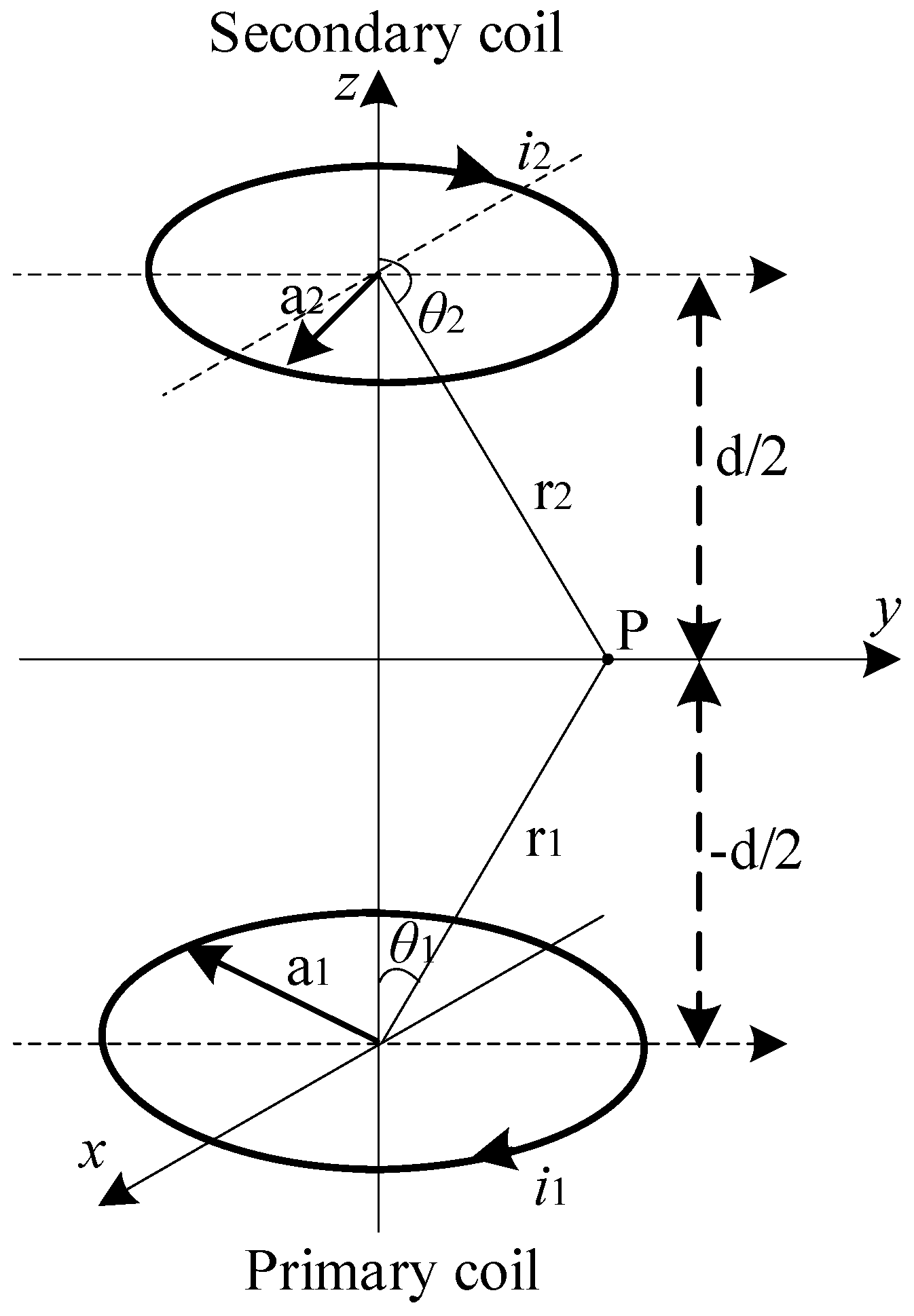
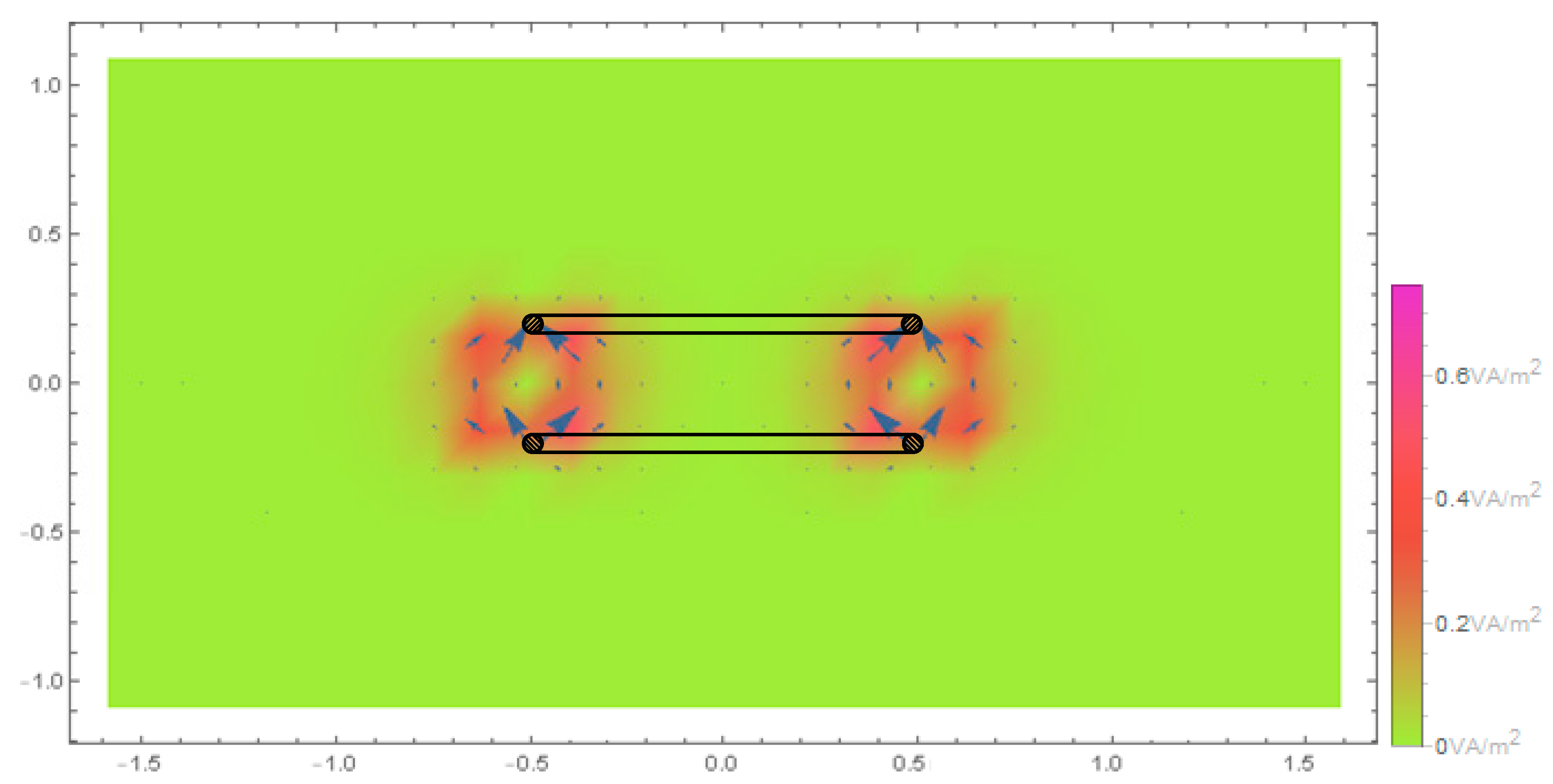
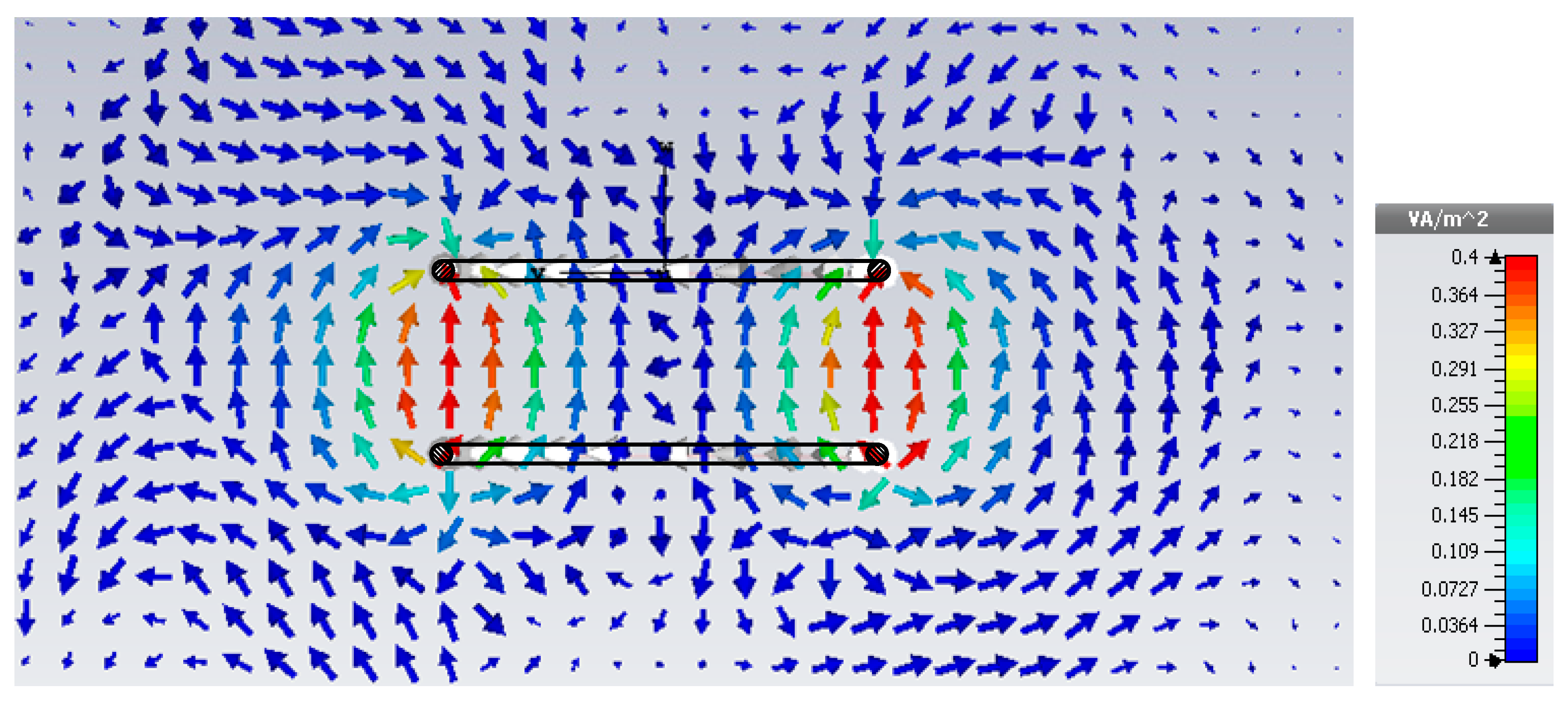
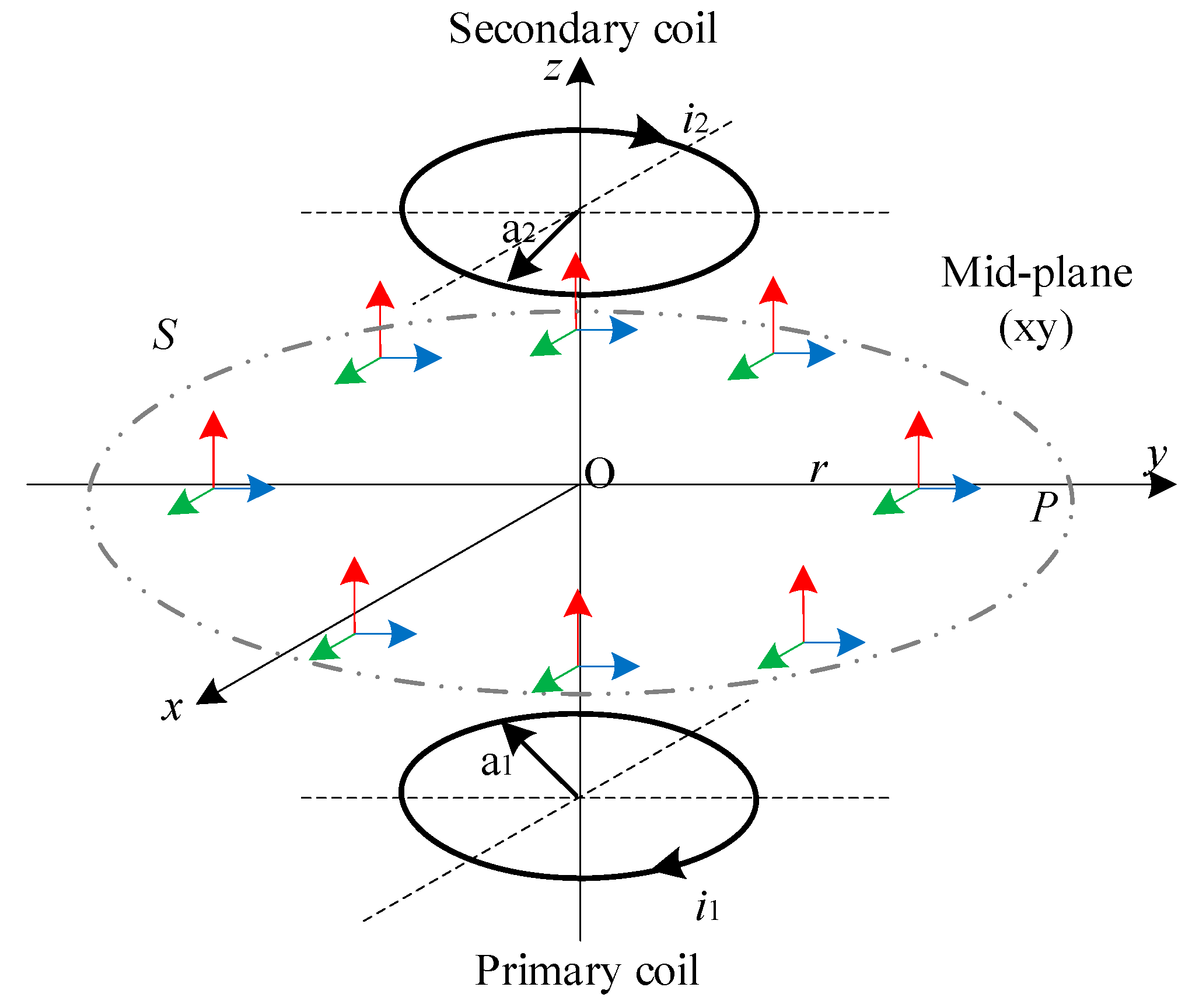
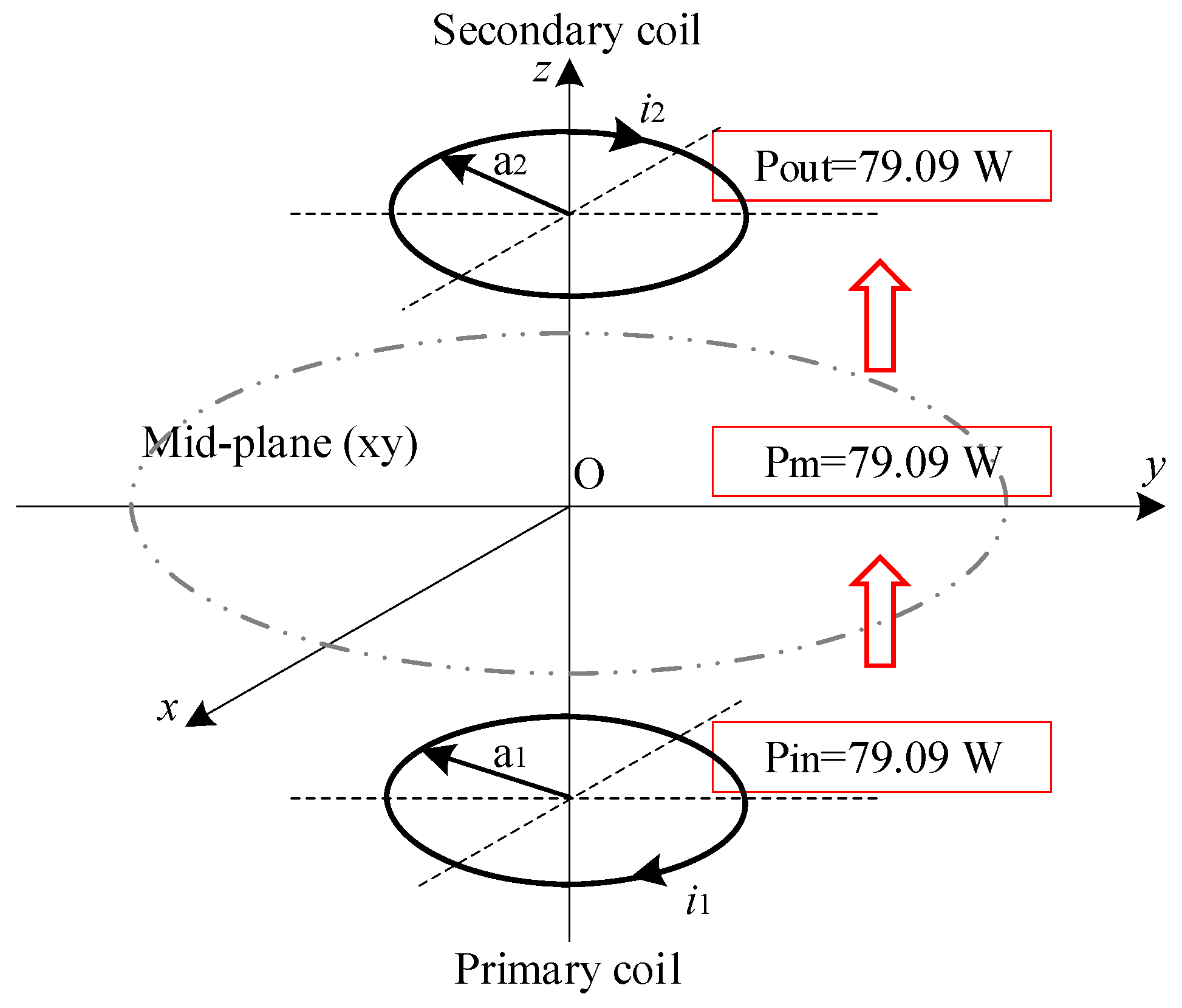
| Parameters | Values | Parameters | Values |
|---|---|---|---|
| f | 1 MHz | a1 = a2 | 0.48 m |
| ω | 6.2832 × 106 rad/s | b1 = b2 | 0.005 m |
| 10 A | d | 0.4 m | |
| N1 = N2 | 1 | RL | 5 Ω |
© 2018 by the authors. Licensee MDPI, Basel, Switzerland. This article is an open access article distributed under the terms and conditions of the Creative Commons Attribution (CC BY) license (http://creativecommons.org/licenses/by/4.0/).
Share and Cite
Liu, Y.; Hu, A.P. Study of Power Flow in an IPT System Based on Poynting Vector Analysis. Energies 2018, 11, 165. https://doi.org/10.3390/en11010165
Liu Y, Hu AP. Study of Power Flow in an IPT System Based on Poynting Vector Analysis. Energies. 2018; 11(1):165. https://doi.org/10.3390/en11010165
Chicago/Turabian StyleLiu, Yuan, and Aiguo Patrick Hu. 2018. "Study of Power Flow in an IPT System Based on Poynting Vector Analysis" Energies 11, no. 1: 165. https://doi.org/10.3390/en11010165





